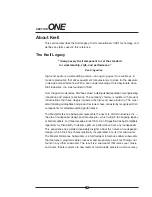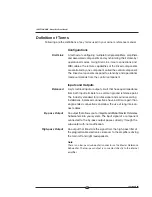
(SECTION ONE: About Krell continued)
Ensuring Maximum Performance
The function of the Master Reference Subwoofer is to
reproduce, with unprecedented authority and fidelity, the
lowest reaches of the audio spectrum, thereby extending
the low frequency capabilities of even the finest music
and home theater systems.
The Krell Master Reference Subwoofer sets a new standard in powered subwoofer
design. At the heart of the Master Reference Subwoofer is its proprietary interface.
This programmable electronic crossover provides unparalleled matching for subwoofer
and system components and allows seamless integration with any loudspeaker
configuration. Additional innovative technologies such as Active Motion Control are
specifically designed to unleash the full power of the built-in Krell amplifier while
assuring that the special characteristics of low frequency sound are meticulously
reproduced. Innovative technology teamed with Krell’s outstanding core technology
ensure maximum power, precision, and performance in the low frequency range.
Innovative Subwoofer Technology and Design
Programmable Electronic Crossover
The programmable electronic crossover is a design
tour de force
. It seamlessly
matches the Master Reference Subwoofer to the characteristics of your system.
You can select and adjust high-pass and low-pass filter profiles and parameters.
Three filter profiles with unique response characteristics integrate the Master
Reference Subwoofer with any loudspeaker and listening setup. Each filter profile
includes parameters for frequency, slope, and level, allowing you to further fine-tune
the subwoofer to your system. These adjustments are easy to select using the
Master Reference Subwoofer’s step-by-step menu and remote control.
Krell Active Motion Control
The traditional approach to subwoofer design is to incorporate a standard servo
circuit that uses feedback to control the drivers at higher output levels. Doing so
effectively controls the drivers, but it can also dampen the musical dynamics, losing
the visceral impact of the low frequency range.
6













































